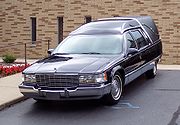
Automotive safety is the study and practice of an astronomy design, construction, equipment and regulation to minimize the occurrence and consequences of traffic collisions involving motor vehicles. Road traffic safety more broadly includes roadway design.

The ichthys or ichthus, from the Greek ikhthū́s is a symbol consisting of two intersecting arcs, the ends of the right side extending beyond the meeting point so as to resemble the profile of a fish. It has been speculated that the symbol was adopted by early Christians as a secret symbol; a shibboleth to determine if another was indeed Christian. It is now known colloquially as the "sign of the fish" or the "Jesus fish".
The vanishing hitchhiker is an urban legend in which people travelling by vehicle, meet with or are accompanied by a hitchhiker who subsequently vanishes without explanation, often from a moving vehicle.
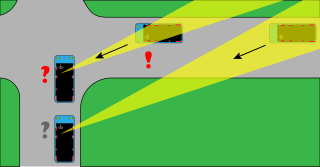
A blind spot in a vehicle or vehicle blind spot is an area around the vehicle that cannot be directly seen by the driver while at the controls, under existing circumstances. In transport, driver visibility is the maximum distance at which the driver of a vehicle can see and identify prominent objects around the vehicle. Visibility is primarily determined by weather conditions and by a vehicle's design. The parts of a vehicle that influence visibility include the windshield, the dashboard and the pillars. Good driver visibility is essential to safe road traffic.
Faxlore is a sort of folklore: humorous texts, folk poetry, folk art, and urban legends that are circulated, not by word of mouth, but by fax machine. Xeroxlore or photocopylore is similar material circulated by photocopying; compare samizdat in Soviet-bloc countries.
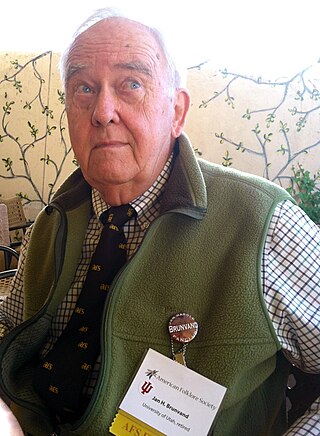
Jan Harold Brunvand is a retired American folklorist, researcher, writer, public speaker, and professor emeritus of English at the University of Utah.

A dashboard (also called dash, instrument panel (IP), or fascia) is a control panel set within the central console of a vehicle or small aircraft. Usually located directly ahead of the driver (or pilot), it displays instrumentation and controls for the vehicle's operation. An electronic equivalent may be called an electronic instrument cluster, digital instrument panel, digital dash, digital speedometer or digital instrument cluster.

A rear-view mirror is a flat mirror in automobiles and other vehicles, designed to allow the driver to see rearward through the vehicle's rear window.

A tonneau is an area of a car or truck open at the top. It can be for passengers or cargo.

New car smell is the odor that comes from the combination of materials found in new automobiles, as well as other vehicles like buses, trucks, and aircraft. Although the scent is described as pleasant by some, there is some question about the possibility that these chemicals pose a health risk.
The Hook, or the Hookman, is an urban legend about a killer with a pirate-like hook for a hand attacking a couple in a parked car. In many versions of the story, the killer is typically portrayed as a faceless, silhouetted old man wearing a raincoat and rain hat that conceals most of his features, especially his face.

A backup camera is a special type of video camera that is produced specifically for the purpose of being attached to the rear of a vehicle to aid in backing up and to alleviate the rear blind spot. It is designed to avoid a backup collision. The area directly behind vehicles has been described as a "killing zone" due to associated accidents. Backup cameras are usually connected to the vehicle head unit display. A common variant is a Surround View system, which assembles a synthetic but positionally accurate top-down view of the vehicle and its adjacencies.

The center console or centre console in an automobile refers to the control-bearing surfaces in the center of the front of the vehicle interior. The term is applied to the area beginning in the dashboard and continuing beneath it, and often merging with the transmission tunnel which runs between the front driver's and passenger's seats of many vehicles.

The Ford car was thoroughly updated in 1941, in preparation for a time of unpredictability surrounding World War II. The 1941 design would continue in an aborted 1942 model year and would be restarted in 1946 and produced until 1948 when the more modern 1949 Fords were ready. During the initial year of this car, it evolved considerably. The front fenders came in three pieces, the theory being that small damages could be replaced easily. During the year, it evolved into two pieces with the lower front and back sections being joined. The hood risers changed, the early ones being the same as 1940 Fords, changing during the year to the better later version. The 1941 Convertible had no rear side windows, the only side windows being in the doors; in 1942, quarter windows were added so the rear occupants could see out.
The killer in the backseat is an urban legend from the United States and United Kingdom. It was first noted by folklorist Carlos Drake in 1968 in texts collected by Indiana University students.
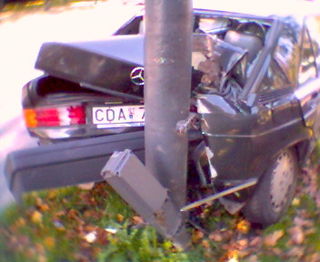
Back-up collisions happen when a driver reverses the car into an object, person, or other car. Although most cars come equipped with rear view mirrors which are adequate for detecting vehicles behind a car, they are inadequate on many vehicles for detecting small children or objects close to the ground, which fall in the car's blind spot, particularly directly aft. That area has been called a "killing zone." Large trucks have much larger blind spots that can hide entire vehicles and large adults.
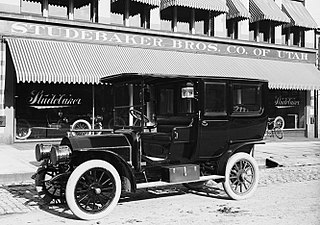
A limousine, or limo for short, is a large, chauffeur-driven luxury vehicle with a partition between the driver compartment and the passenger compartment which can be operated mechanically by hand or by a button electronically. A luxury sedan with a very long wheelbase and driven by a professional driver is called a stretch limousine.

Wackel-Elvis is a 6 inches (15 cm) tall, hanging dashboard figure designed to resemble musician and actor Elvis Presley. A prototype of the figure was first introduced by the German automobile manufacturer Audi in a series of television commercials which were broadcast in several European countries. The commercials were produced by the advertising agency Saatchi & Saatchi in 2001 to promote Audi's new continuously variable "multitronic" transmission. Due to a high demand by Elvis fans after publication of the commercials, 15,000 Wackel-Elvis figures were produced and sold at the Audi factory outlet store.

Car controls are the components in automobiles and other powered road vehicles, such as trucks and buses, used for driving and parking.

The Martin Auto Museum is a privately owned non-profit automobile museum located in Glendale, Arizona. The museum is dedicated to the preservation of collectible automobiles for educational purposes. Admission is a $10 donation per person over the age of 12. Some of the services provided by the museum include guided tours for such groups as local schoolchildren, veteran organizations and car clubs.



